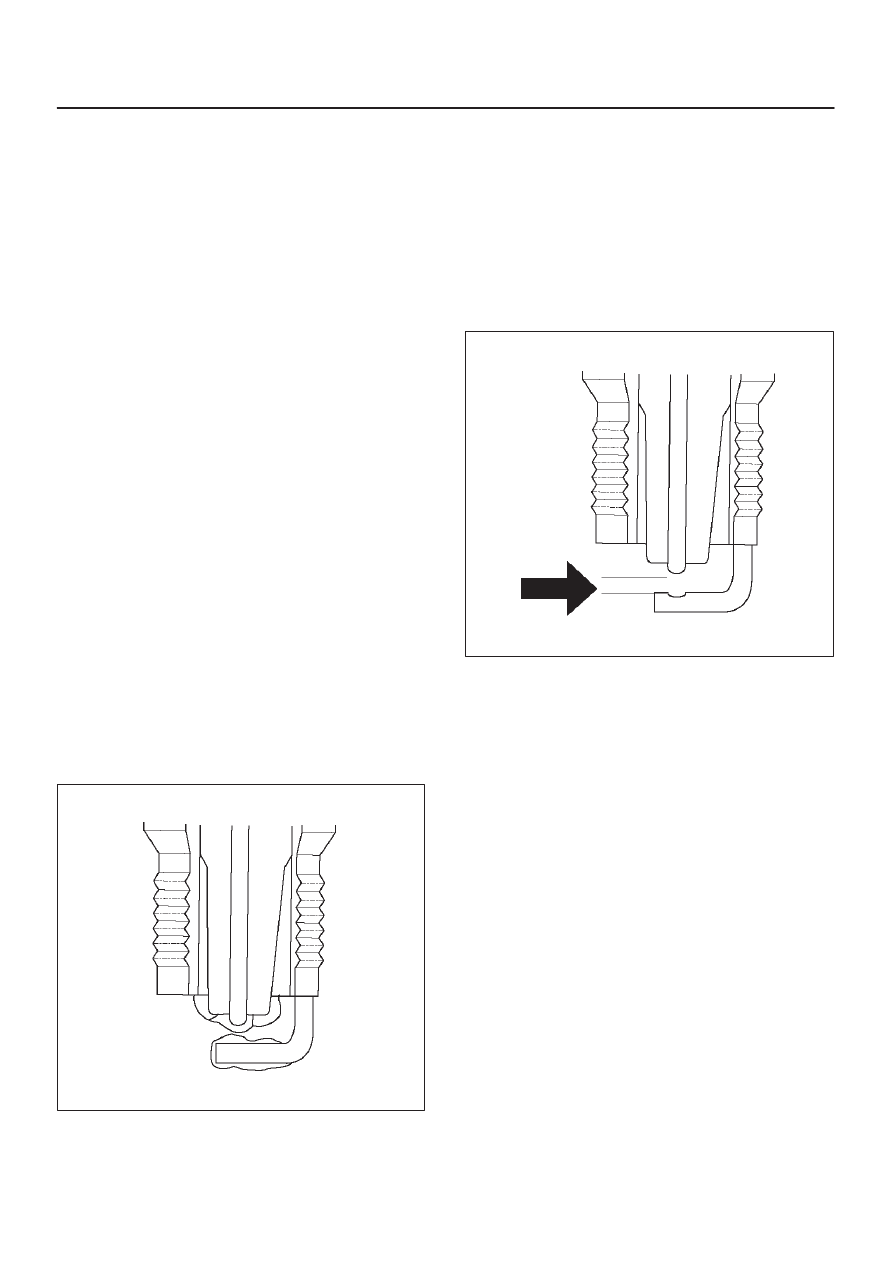Opel Frontera UE. Manual - part 858

6E1–315
X22SE 2.2L ENGINE DRIVEABILITY AND EMISSION
Spark Plug
Although worn or dirty spark plugs may give satisfactory
operation at idling speed, they frequently fail at higher
engine speeds. Faulty spark plugs may cause poor fuel
economy, power loss, loss of speed, hard starting and
generally poor engine performance. Follow the
scheduled maintenance service recommendations to
ensure satisfactory spark plug performance. Refer to
Maintenance and Lubrication.
Normal spark plug operation will result in brown to
grayish–tan deposits appearing on the insulator portion of
the spark plug. A small amount of red–brown, yellow, and
white powdery material may also be present on the
insulator tip around the center electrode. These deposits
are normal combustion by–products of fuels and
lubricating oils with additives. Some electrode wear will
also occur.
Carbon fouling of the spark plug is indicated by dry, black
carbon (soot) deposits on the portion of the spark plug in
the cylinder. Excessive idling and slow speeds under light
engine loads can keep the spark plug temperatures so
low that these deposits are not burned off. Very rich fuel
mixtures or poor ignition system output may also be the
cause.Refer to DTC P0172.
Oil fouling of the spark plug is indicated by wet oily
deposits on the portion of the spark plug in the cylinder,
usually with little electrode wear. This may be caused by
oil during break–in of new or newly overhauled engines.
Deposit fouling of the spark plug occurs when the normal
red–brown, yellow or white deposits of combustion
by–products become sufficient to cause misfiring. In
some cases, these deposits may melt and form a shiny
glaze on the insulator around the center electrode. If the
fouling is found in only one or two cylinders, valve stem
clearances or intake valve seals may be allowing excess
lubricating oil to enter the cylinder, particularly if the
deposits are heavier on the side of the spark plug facing
the intake valve.
TS23995
Excessive gap means that the air space between the
center and the side electrodes at the bottom of the spark
plug is too wide for consistent firing. This may be due to
improper gap adjustment or to excessive wear of the
electrode during use. A check of the gap size and
comparison to the gap specified for the vehicle in
Maintenance and Lubrication will tell if the gap is too wide.
A spark plug gap that is too small may cause an unstable
idle condition. Excessive gap wear can be an indication of
continuous operation at high speeds or with engine loads,
causing the spark to run too hot. Another possible cause
is an excessively lean fuel mixture.
TS23992
Low or high spark plug installation torque or improper
seating can result in the spark plug running too hot and
can cause excessive center electrode wear. The plug and
the cylinder head seats must be in good contact for proper
heat transfer and spark plug cooling. Dirty or damaged
threads in the head or on the spark plug can keep it from
seating even though the proper torque is applied. Once
spark plugs are properly seated, tighten them to the
torque shown in the Specifications Table. Low torque may
result in poor contact of the seats due to a loose spark
plug. Overtightening may cause the spark plug shell to be
stretched and will result in poor contact between the
seats. In extreme cases, exhaust blow–by and damage
beyond simple gap wear may occur.
Cracked or broken insulators may be the result of
improper installation, damage during spark plug
re–gapping, or heat shock to the insulator material. Upper
insulators can be broken when a poorly fitting tool is used
during installation or removal, when the spark plug is hit
from the outside, or is dropped on a hard surface. Cracks
in the upper insulator may be inside the shell and not
visible. Also, the breakage may not cause problems until
oil or moisture penetrates the crack later.